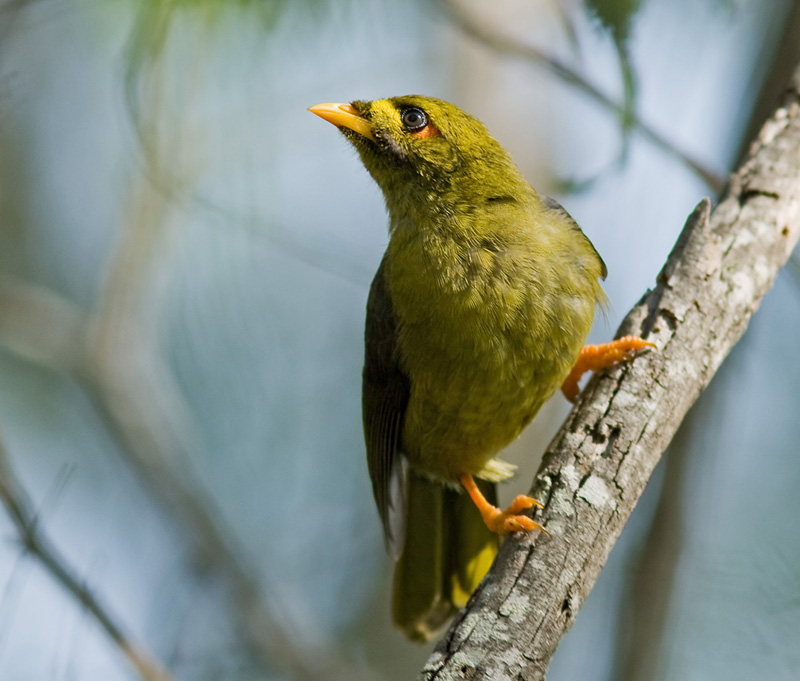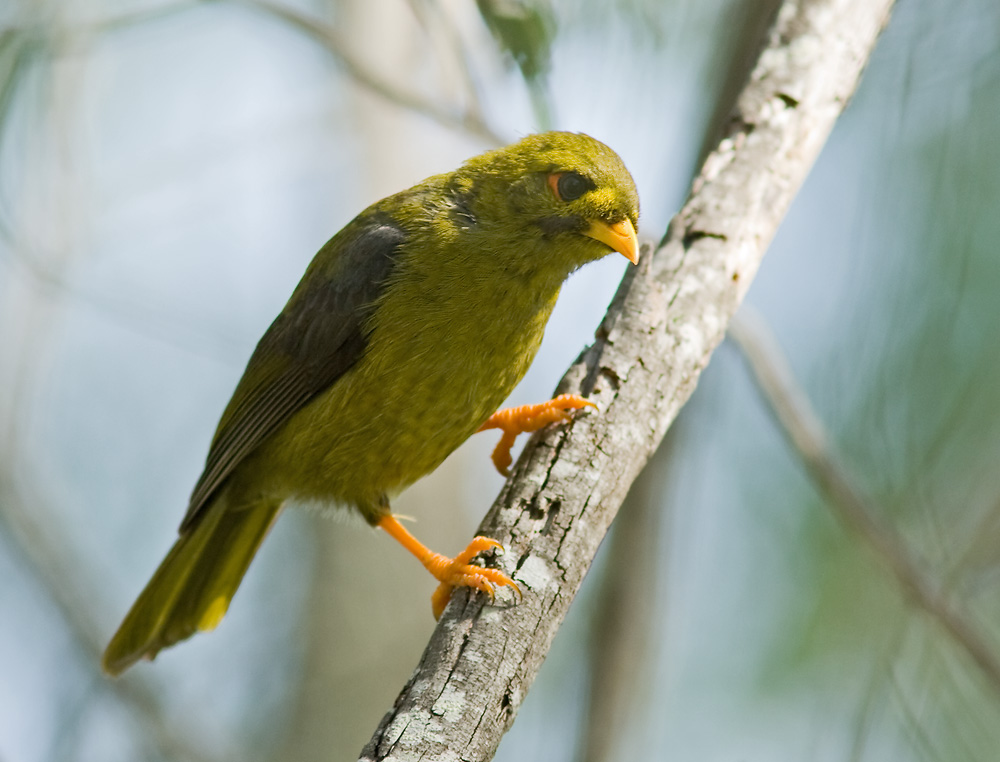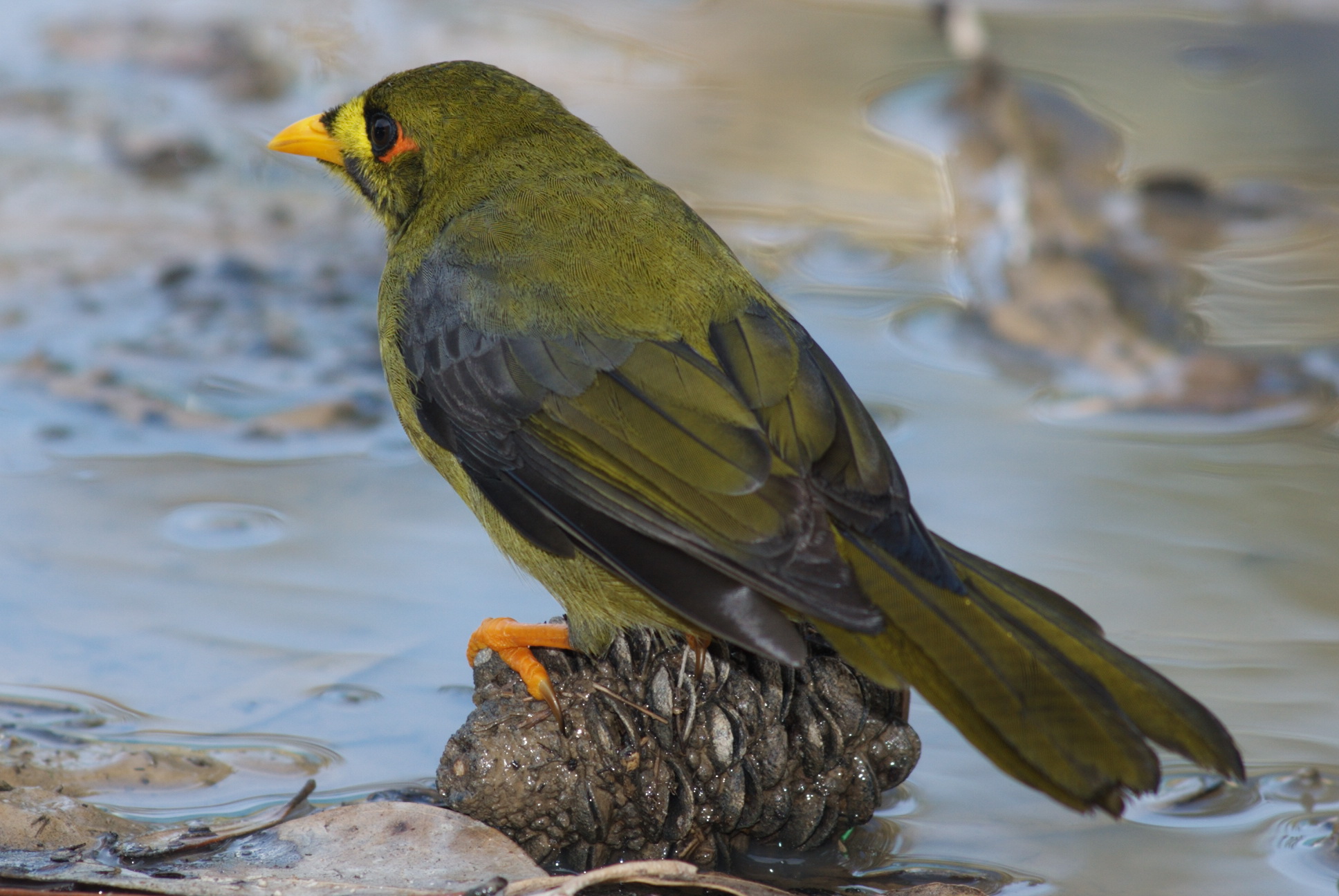
Manorina melanophrys
TAXONOMY
Turdus melanophrys Latham, 1802, Port Jackson, New South
Wales, Australia.
OTHER COMMON NAMES
English: Bellbird; French: Mйlephage а sourcils noirs; German:
Glockenhonigfresser; Spanish: Manorina Campanera.
PHYSICAL CHARACTERISTICS
7.3 in (18.5 cm); 0.9–1.25 oz (25–35 g). Mostly olive-green
with darker wings and yellow-orange eye patch.
DISTRIBUTION
Southeastern Australia from north of Brisbane to Melbourne.
HABITAT
Eucalyptus forests in the ranges and coastal plains, typically in
wet gullies with a good shrub layer. Less commonly in eucalyptus
woodlands.
BEHAVIOR
Highly colonial, with intense aggression keeping out most other
small and medium-sized birds. Larger birds and mammals are
mobbed. Colonies are easy to locate with the constant bell-like
calls and chipping and chucking calls. Highly sedentary, with
only occasional movements out of the colony.
FEEDING ECOLOGY AND DIET
Glean insects, especially psyllids and their lerp, from foliage.
Less commonly forage on bark. Feed on nectar when available
in their colony.
REPRODUCTIVE BIOLOGY
Coteries in colonies are groups of breeding pairs, among which
there is strong cooperation. May breed at any time of year but
mostly June to November in the north and August to January in
the south. Nests are typically placed in the understory at 3–10
feet (1–3 m) high and are made of grass and twigs and are built
only by the female. Usually two eggs (occasionally one or three),
which are laid and incubated by the female for about 14 days.
About half of feeding visits to the young are by the parents; the
remainder are by numerous helpers, mostly male, some of which
are breeding themselves. Young fledge at 12 days.
CONSERVATION STATUS
Not threatened.
SIGNIFICANCE TO HUMANS
Bellbirds’ aggressive
BEHAVIOR
means that they can deter threatened
species from remaining in an area.
Photo Gallery of - Bell miner




 Animalia Life
Animalia Life